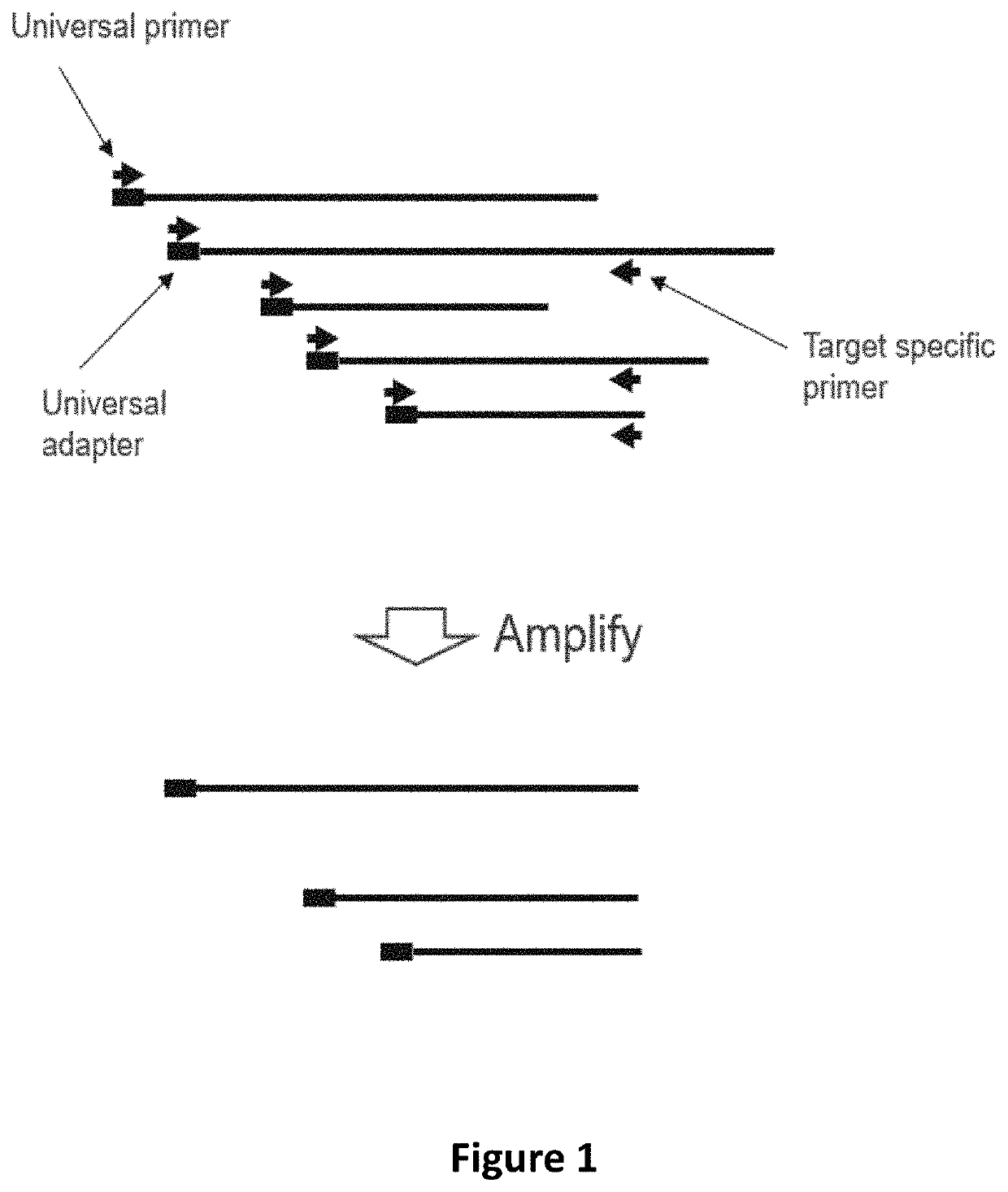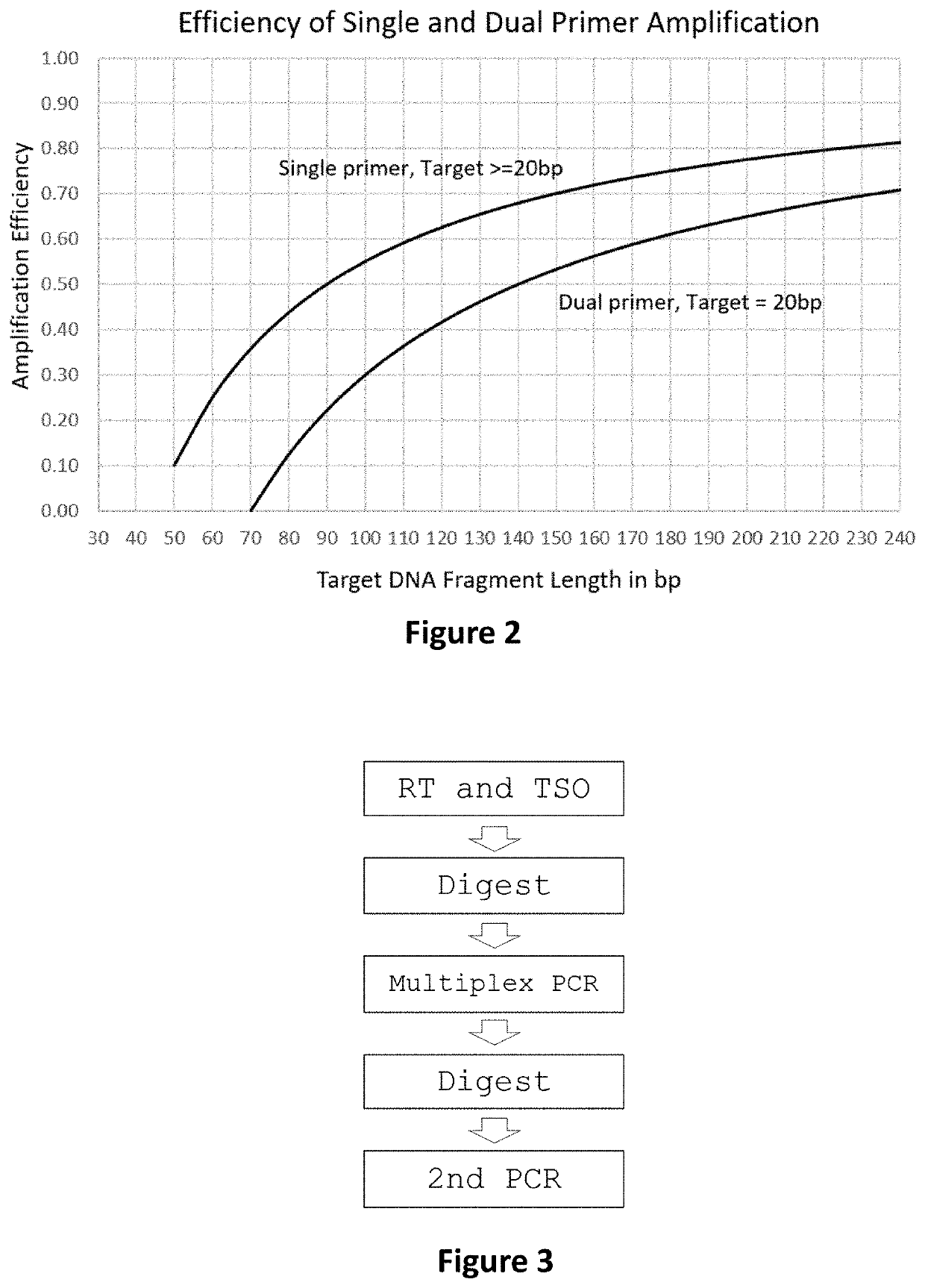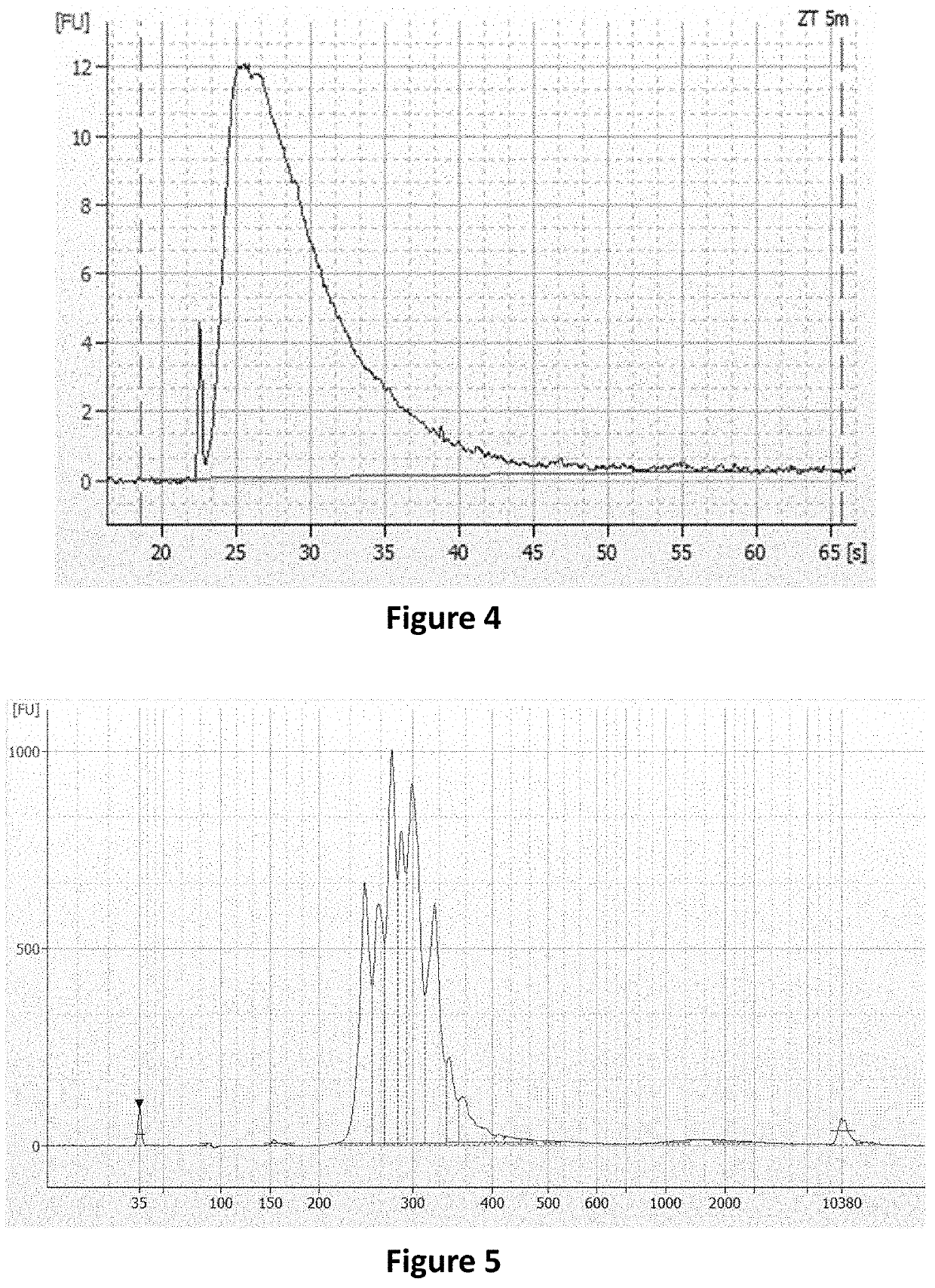Methods and systems to amplify short RNA targets
- Summary
- Abstract
- Description
- Claims
- Application Information
AI Technical Summary
Benefits of technology
Problems solved by technology
Method used
Image
Examples
example 1
[0068]An example of the methods and systems described herein is to amplify 61 targets from short RNA fragments. Short RNA fragments were made by breaking reference RNA (Quantitative PCR Human Reference Total RNA, Agilent, catalog number 750500) into short fragments with NEBNext® Magnesium RNA Fragmentation Module (New England Biolab, catalog number E6150S) according to the suggested method. The lengths of these RNA fragments were confirmed by using 2100 BioAnalyzer instrument (Agilent Technologies, catalog number G2938B) (FIG. 4).
[0069]50 ng of RNA fragments were denatured at 65° C. for 5 minutes in the presence of 3 μM of random hexamer and 2 mM of dNTP in 14 μl, followed by immediate incubation on ice for 3 minutes. Then 4 μM of a template switching primer, reverse transcription buffer (50 mM Tris-HCl, pH 8.3 at 25° C., 75 mM KCl, 3 mM MgCl2, 10 mM DTT) and 200 unites of SMARTScribe™ Reverse Transcriptase (TaKaRa, catalog number 639538) were added into the reaction. The total volu...
example 2
[0074]In this example, a library was made by using the same method described in Example 1. However, a mixture of RNA fragments containing known mutations was used in order to validate detection of these mutations by sequencing the made library by NGS. Thus, the reference RNA fragment was replaced with Seraseq® Fusion RNA Mix V4 (SeraCare, Material Number 0710-0496). There are 18 known fusion mutations in Seraseq® Fusion RNA Mix V4, 11 of the fusion mutations can be amplified and detected by the panel of 61 target-specific primers. The 11 known fusion mutation are listed in Table 2.
TABLE 2fusion mutations existing in Seraseq® Fusion RNAMix V4 covered by the target specific primers from Table 1.Fusions existing in Seraseq® Fusion RNA Mix V4 andcovered by the panel of primers described hereinNCOA4 | 51582940 | RET | 43612031KIF5B | 32306070 | RET | 43609927EML4 | 42522657 | ALK | 29446395FGFR3 | 1808662 | TACC3 | 1741428CD74 | 149784242 | ROS1 | 117645579SLC34A2 | 25665953 | ROS1 |1176...
PUM
| Property | Measurement | Unit |
|---|---|---|
| Temperature | aaaaa | aaaaa |
| Molar density | aaaaa | aaaaa |
| Molar density | aaaaa | aaaaa |
Abstract
Description
Claims
Application Information
 Login to View More
Login to View More - R&D
- Intellectual Property
- Life Sciences
- Materials
- Tech Scout
- Unparalleled Data Quality
- Higher Quality Content
- 60% Fewer Hallucinations
Browse by: Latest US Patents, China's latest patents, Technical Efficacy Thesaurus, Application Domain, Technology Topic, Popular Technical Reports.
© 2025 PatSnap. All rights reserved.Legal|Privacy policy|Modern Slavery Act Transparency Statement|Sitemap|About US| Contact US: help@patsnap.com



